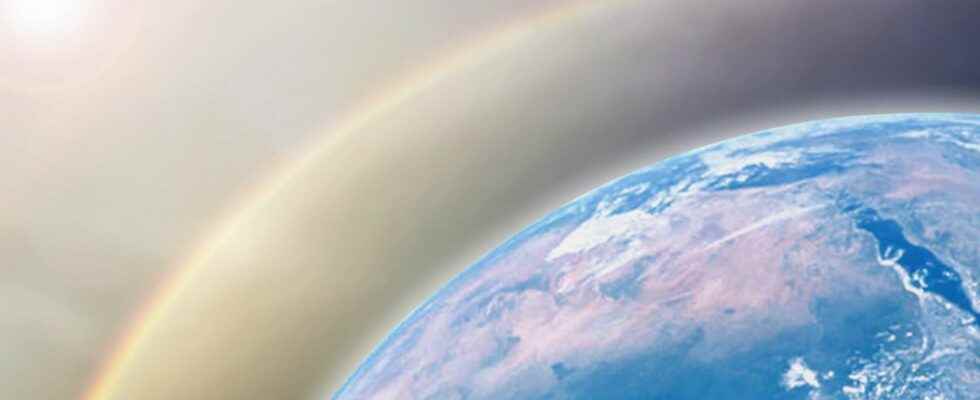Above Antarctica, a hole forms each spring in the ozone layer which protects our planet from certain harmful radiations. Measures have been taken to reduce it. But a researcher now believes that this hole would not be the only one to endanger life on Earth. It is not unanimous.
You will also be interested
[EN VIDÉO] The ozone layer monitored by satellites By absorbing ultraviolet radiation from the Sun, the ozone layer protects living things on the Earth’s surface. It is essential. But scientists have observed since the mid-1970s, a worrying decrease in its concentration in the stratosphere under the deleterious effects of the famous CFCs (among others). Since the Montreal Protocol (1987), which led to international awareness, measures have been taken to address the problem. Is the “hole in the ozone layer” on the mend? It seems so. Satellites monitor the fluctuations of this gas in the upper atmosphere, under the influence of the Sun and human activities…
In 1985, researchers revealed that a huge ” hole “ appeared every spring in the ozone layer over Antarctica. In question, chemicals that we used in our refrigerators, in our aerosol cans or in industrial cleaners. The famous chlorofluorocarbons, in particular. The CFCs. As early as 1987, the Montreal Protocol made it possible to limit the use of these compounds. And their production stopped in 1994. The hole began to close.
But Qing-Bin Lu, a researcher at the University of Waterloo (Canada), announces today that it has observed another hole in the ozone layer. Above the tropics this time. It would have started to form in the 1980s. And it would now be present throughout the year. Worse, it would extend over an area 7 times greater than that of the hole observed above Antarctica in the spring.
Remember that the ozone layer is the one that absorbs part of the ultraviolet radiation harmful — UV B, in particular — emitted by the Sun. Thus a hole in the ozone layer — understand a reduction in the concentration of stratospheric ozone — can lead to accelerated skin aging, increased burns and cancer and even to an increase in the number of diseases of the immune system. A weakened ozone layer also means lower quality yields for our crops and a threat to the planktonthe first link in the food chain in the seas. We understand the concern.
A not-so-obvious conclusion
According to the researcher, as is the case at the heart of the hole observed above Antarctica, it is no less than 80% of the ozone — and at least 25% over the whole hole — which would have disappeared above the tropics. Data that coincides with a model that he himself developed of the destruction of the ozone layer by cosmic rays. And who could, again according to him, play a major role in the climate change current.
*There is no ozone hole over the tropics*
Take home: This is shoddy analysis and ignores the vast literature on ozone trends in different regions. Continued ozone declines in the tropics are mostly due to climate-driven changes in the circulation /1 https://t.co/uvBQgdsveT
— Paul Young (@pjyng) July 5, 2022
But already, some other researchers are surprised by these results. On TwitterPaul Young, an expert on the ozone question, does not hesitate to qualify the analysis as ” bad “. According to him, a hole in the ozone layer above the tropics may appear to appear when we take into account “percentages rather than absolute values”. However, it is the latter that are important for evaluating the quantity of UV radiation that reaches the ground.
Moreover, Paul Young specifies that the changes observed in the ozone layer above the tropics would be the result “both anthropogenic and natural processes”. He explains that before the 2000s, the disappearance of ozone, including in this region, was due to ever-increasing concentrations of CFCs. Afterwards, the levels continued to decrease under the effect of a modification of the movements atmospheric effects related to climate change. Other researchers confirm this, emphasizing the “lack of scientific rigor” reasonings of Qing-Bin Lu which would contain “serious mistakes”. A way of calling on scientists who study the subject to dig deeper into the question.
Interested in what you just read?
